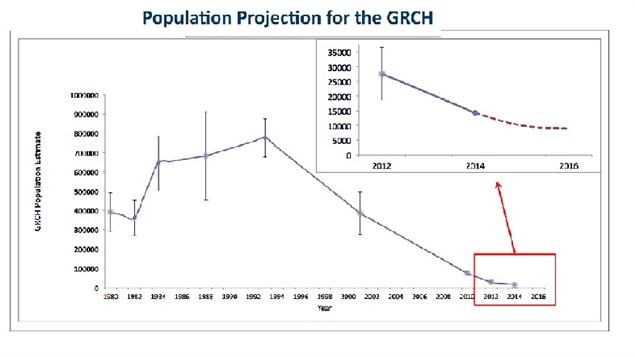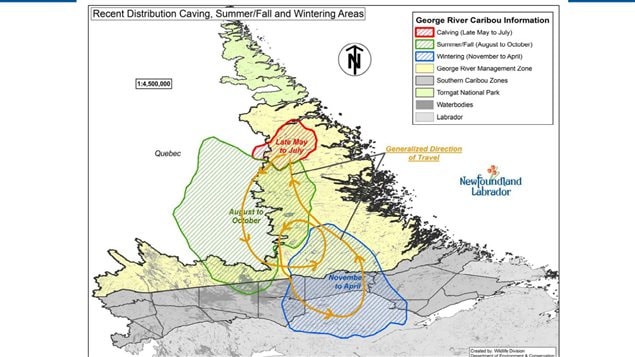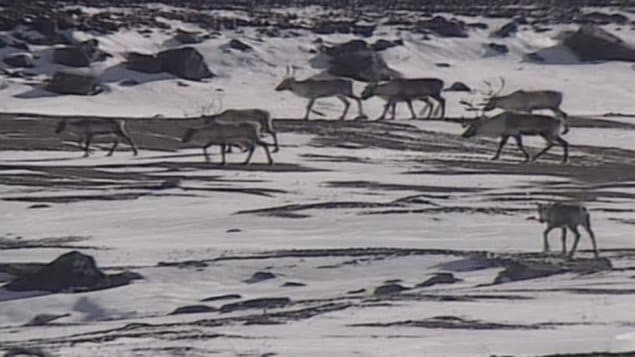It was once the biggest caribou herd in Canada. In the 1980’s the herd numbered over 700,00. In 2013, it was estimated at about 20,000, and now that estimate has declined to about 10,000.
While the George River heard numbers have always fluctuated, the ever decreasing number is causing great concern.

Perry Trimper, Minister of Environment and Conservation Perry Trimper, quoted in a CBC news article says, “”Across Canada and around the world, caribou herds are all on the decline right now. We don’t suspect there’s anything unusual other than a natural, and I guess I would use the word phenomenon here, because we don’t understand why and how this occurs.”
The herd is named after the 565 kilometre long George River which crosses through their range and which flows from Labrador north-west into Ungava Bay.
The concern is that mortality is still very high even though recent studies show calf survival rates have increased from 10 percent in 2013, 17 percent in 2014, to the most estimate of 20 percent.
However, the adult male population has shrunk to only five percent from nine percent in 2014, and overall mortality is at 30%.

To try to aid in herd recovery a five year hunting ban was imposed in 2013, but some aboriginal groups protested. Some ten hunters from the northern community of Sheshatshiu is due to be heard in Newfoundland and Labrador provincial court in Happy Valley-Goose Bay today (Monday).
Environment minister Trimper has renewed calls to respect the hunting ban for the benefit of the herd.

A Newfoundland provincial update says that claims that “an annual harvest of small number of caribou under present conditions will not have detrimental effects on the population is not supported by existing evidence which shows the herd is continuing to decline to critically low numbers. Therefore, any huntng at this time results in mortality that is in addi”on to the proportion of the population annually dying from natural causes. This is referred to as additve mortality which increases the speed of the decline and drives the population downward.”
Meanwhile a potential disagreement is occurring over a conservation plan for another caribou herd, the Bluenose East herd in the far north.
The Northwest Territories (N.W.T) government wants a limit of 950 animals, bulls only, for the entire vast area of Nunavut and the N.W.T.
The five communities in the huge Sahtu region of the NWT, would be allocated 163 animals, but the chief of one community, Deline, says they should get 150 hunting tags for themselves.
According to the Department of Environment and Natural Resources, the Bluenose-East herd has declined from about 68,000 caribou in 2013 to between 35,000 and 40,000 in 2015. Its number of breeding cows has also dropped by 50 per cent since 2013.
A conflict over hunting numbers has not yet arisen and the Sahtu Renewable Resources Board is evaluating both plans
additional information and sources
Newfoundland and Labrador study (pdf) 2010
Newfoundland and Labrador update 2015







For reasons beyond our control, and for an undetermined period of time, our comment section is now closed. However, our social networks remain open to your contributions.